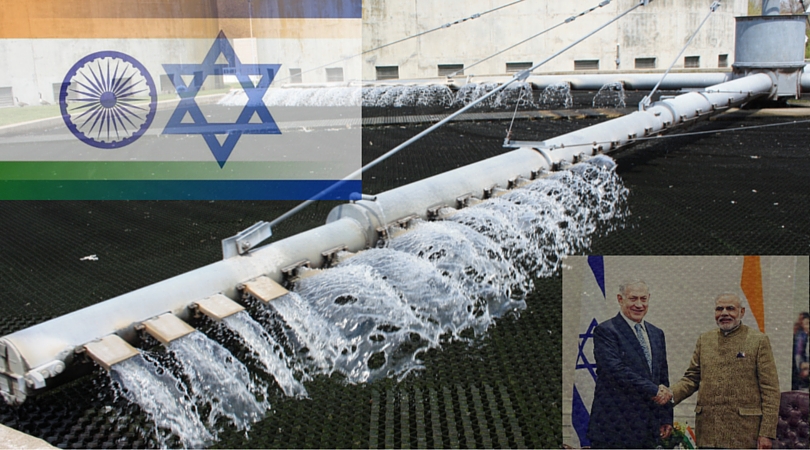The rapidly emerging field of robot-assisted surgery promises to revolutionize how doctors operate. Israel is one of the world leaders in this field.
(Originally published on Israel21c.org)
Robotic or robot-assisted surgery can give doctors better vision, precision, flexibility and control when performing complex minimally invasive procedures. Someday, surgeons will even use robotic tools to operate through the Internet, bringing modern medical techniques to remote parts of the world.
Only a handful of surgical robots currently are approved for use, and Israelis developed three of them.
“This really puts us in the center of the field,” says Prof. Alon Wolf, founding director of the Biorobotics and Biomechanics Lab at Technion-Israel Institute of Technology and chair of the Robotics in Healthcare session at the upcoming 2016 IATI-BioMed conference in Tel Aviv, May 24-26.
Wolf was studying for his doctorate under robotics pioneer Moshe Shoham of the Technion when they started developing SpineAssist (see below) for minimally invasive spinal surgery. This revolutionary device later formed the basis for Shoham’s Mazor Robotics.
“Many countries are putting a lot of money into developing these technologies, yet they have not been as successful as we are,” Wolf tells ISRAEL21c. “Israel is very respected around the world in this area.”
The “snake” robot for search-and-rescue that Wolf presented to President Obama on his 2013 visit to Israel was the inspiration for the Flex Robotic System (see below).

Wolf explains that surgical robotics began as a vision of the US army to deliver immediate treatment on the battlefield without exposing the surgeon to danger. A medic would put the robot into place and the surgeon would operate it remotely from a bunker.
“This vision is not completely realized yet, but we do have enabling technologies that allow you to do things in the operating room that you could not do before, and that’s crucial,” says Wolf. “In addition, improved remote capabilities allow a surgeon to log into cameras in other cities and control the view in real time via computer.”
Israel also used military experience as the basis of its robotics advances, says serial entrepreneur Ziv Tamir, the original distributor in Israel for Intuitive Surgical’s da Vinci, the American product that broke the ground for robotic surgical systems in 1999. He went on to found a few Israeli companies in this space through ZDev Medical.
“The technologies from Israel are based on knowledge from the military. This is a critical difference because all the surgical robotics projects in other countries are coming from universities so the technology is not always needs-based,” Tamir tells ISRAEL21c.
At BioMed, Wolf will discuss how medical robotics involves innovation from many disciplines. “I’ll try to show how this puzzle of tools and Internet and users is coming together to create a new reality, and why high-tech companies like Google, IBM and Apple are investing in technologies out of the scope of their core technology, including robotics,” says Wolf.
“I believe the future is in robotics,” agrees Tamir. “All the big companies such as J&J have projects in robotic surgery.”
Here’s a look at seven significant Israeli surgical robotics companies.
1. Mazor Robotics of Caesarea is a global innovator in robotic spine and brain surgery products based on technology pioneered by Prof. Moshe Shoham of the Technion-Israel Institute of Technology’s Kahn Medical Robotics Laboratory for Research and Instruction.
The first product, SpineAssist, was approved by the FDA in 2004. Mazor’s next-generation Renaissance Guidance System is now installed in about 100 medical centers around the world (more than half of them in the United States) for biopsies, reconstructive surgery, scoliosis correction, spinal fusion and other delicate operations.
The Renaissance 3D planning software helps surgeons map procedures for each patient and guides the tools according to the predetermined blueprint during the operation.
2. MedRobotics’ Flex Robotic System, based on Alon Wolf’s snake robot, can reach body cavities beyond the surgeon’s direct line of sight, especially head and neck structures.
“You lock it into location and operate through the snake, introducing portfolio tools we developed,” says Wolf. “It’s a single-port surgery because the system is flexible, enabling surgeons to do things they couldn’t do before.”
The Flex Robotic System was approved for medical robotics assistive surgery in Europe in 2014 and in the United States in July 2015. Wolf cofounded MedRobotics 10 years ago with colleagues he worked with at Carnegie Mellon University in Pittsburgh, Pennsylvania. It’s headquartered in Massachusetts.
3. MST (Medical Surgery Technologies) of Yokneam makes AutoLap, an image-guided laparoscope positioning system to orient the surgeon and stabilize the surgeon’s motions — without a human assistant – in minimally invasive surgery.
The surgeon wears a wireless ring-like device that interfaces with the AutoLap system. The proprietary software captures and interprets visual data from the laparoscope and maneuvers it in coordination with the surgeon’s actions in real time, according to CEO Motti Frimer.
“We compare it to Xbox in the clinical domain, where the system understands individual gestures,” he says.
Last June, MST received $12.5 million in an investment round led by Haisco Pharmaceutical Group of China, earmarked for expanding marketing and sales of AutoLap in the United States, Europe and China. The system is already used in a dozen medical centers in Europe and at the first US site.
“We are addressing a real need in computer-assisted robotic surgery, because most robotics must be commanded by joysticks or other devices while the MST image-analysis platform responds to the surgeon’s actions. We aim to be the gold standard for all laparoscopic surgery, and also hope to expand MST’s image-based artificial intelligence technology into additional medical robot and computer-assisted surgical domains.”

4. Human Extensions in Netanya is awaiting FDA (US) and CE (Europe) approvals for its ergonomic, bionic surgical glove designed as a robotized brain to enable smooth and precise movements.
Founder and CEO Tami Frenkel explains that Human Extensions’ disruptive technology is modular for use in a wide variety of complex minimally invasive operations and can be tailored to a surgeon’s skill level and specific task.
“This novel solution will allow surgeons — for the first time — to access a patient’s anatomy in a manner resembling open surgery,” Frenkel tells ISRAEL21c. “It’s as if their hands are inside the patient’s body.”
She says the Human Extensions platform represents a big step forward as “the only smart multifunctional handheld system on the horizon for minimally invasive surgery of all kinds.”

5. Microbot Medical was cofounded in 2010 by Moshe Shoham with Yossi Bornstein and Harel Gadot, leveraging two technologies from Shoham’s mechanical engineering lab: ViRob and TipCAT. Advanced prototypes are in development.
ViRob is a revolutionary autonomous crawling micro-robot that acts as a “submarine” allowing surgeons to send a camera, medication or shunts to narrow, twisting parts of the body (such as blood vessels and digestive and respiratory organs) and to do minimally invasive operations on those areas guided by MRI and CT scanners. Prof. Nir Shvalb, now head of the Kinematics & Computational Geometry Multidisciplinary Laboratory at Ariel University, worked on ViRob as Shoham’s PhD student.
TipCAT is a proprietary flexible, self-propelled endoscope for use in the colon, blood vessels and urinary tract. A series of balloons sequentially inflate and deflate to create safe, fast and gentle locomotion inside body structures. Like ViRob, TipCAT supports functional tools.

6. XACT Robotics is developing a novel platform robotic technology for accurately inserting and steering the needle in minimally invasive CT-guided procedures such as lung biopsies.
It consists of a robot, a control unit connected to the CT and to the robot, and a workstation where the interventional radiologist can plan and observe the procedure. Any deviation from the planned pathway can be detected and corrected immediately without reinserting the needle or repositioning the patient.
The company hasraised $5 million in a round led by MEDX Ventures Group, which founded the firm based on technology from the Technion. The American National Health Institute will conduct joint trials with XACT on animals and later on humans.The CEO of the company, based in Shoham, is Chen Levine.
7. MemicInnovative Surgery “is dedicated to developing and delivering innovative robotic surgical solutions that enable surgical procedures currently considered infeasible,” says CEO Dvir Cohen, who has mechanical engineering degrees from the Technion and an MBA from Tel Aviv University.
“Memic’s surgical robotic system is based on a unique design that enables a novel and intuitive surgical approach for laparoscopic procedures,” says company cofounder Nir Shvalb.
Based in Kfar Saba, Memic is now moving forward with clinical trials and regulatory clearances.





